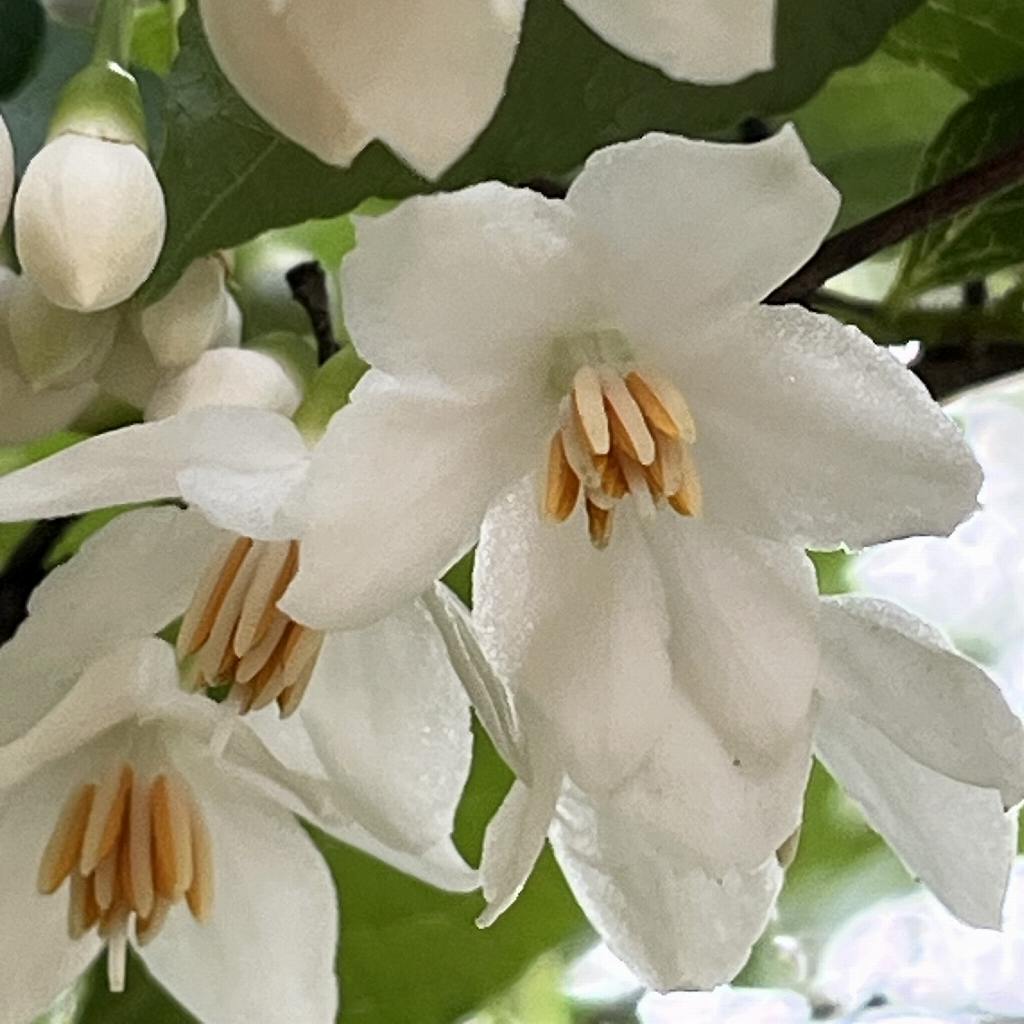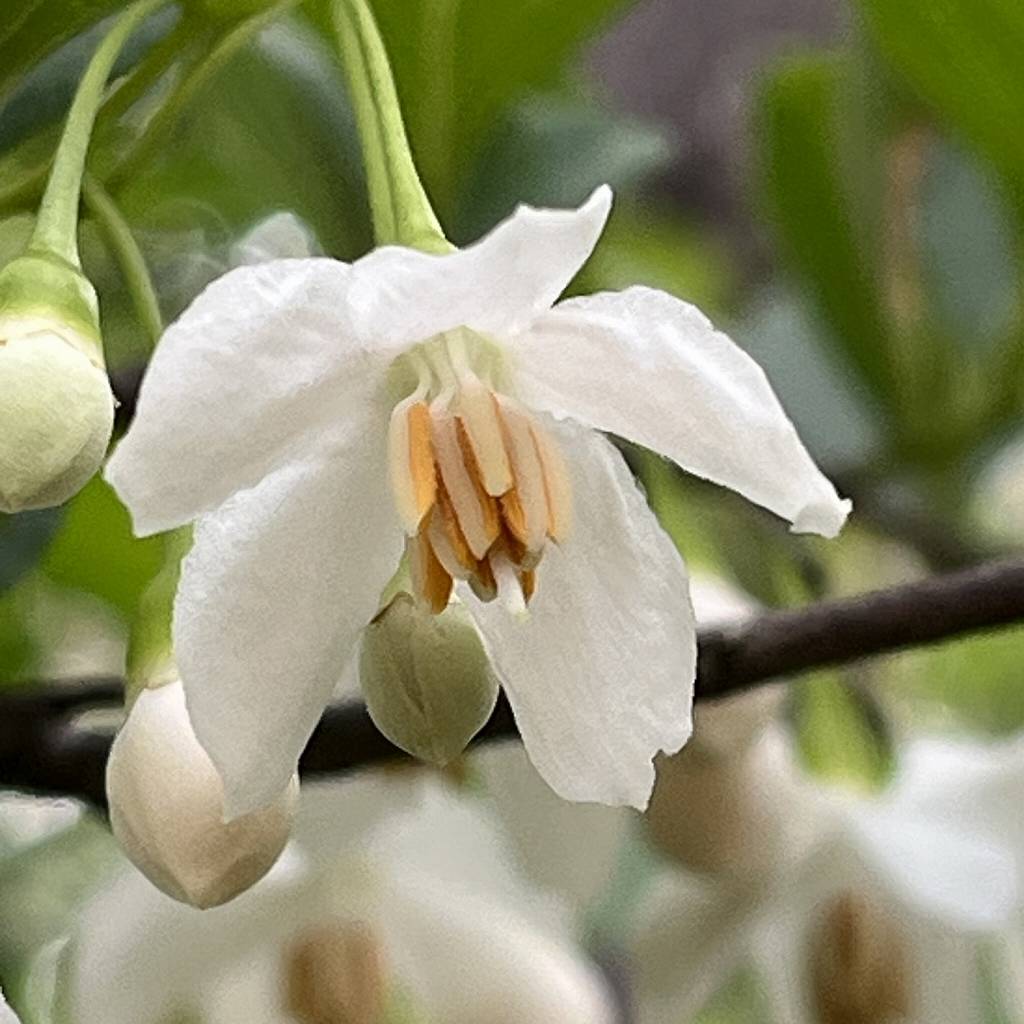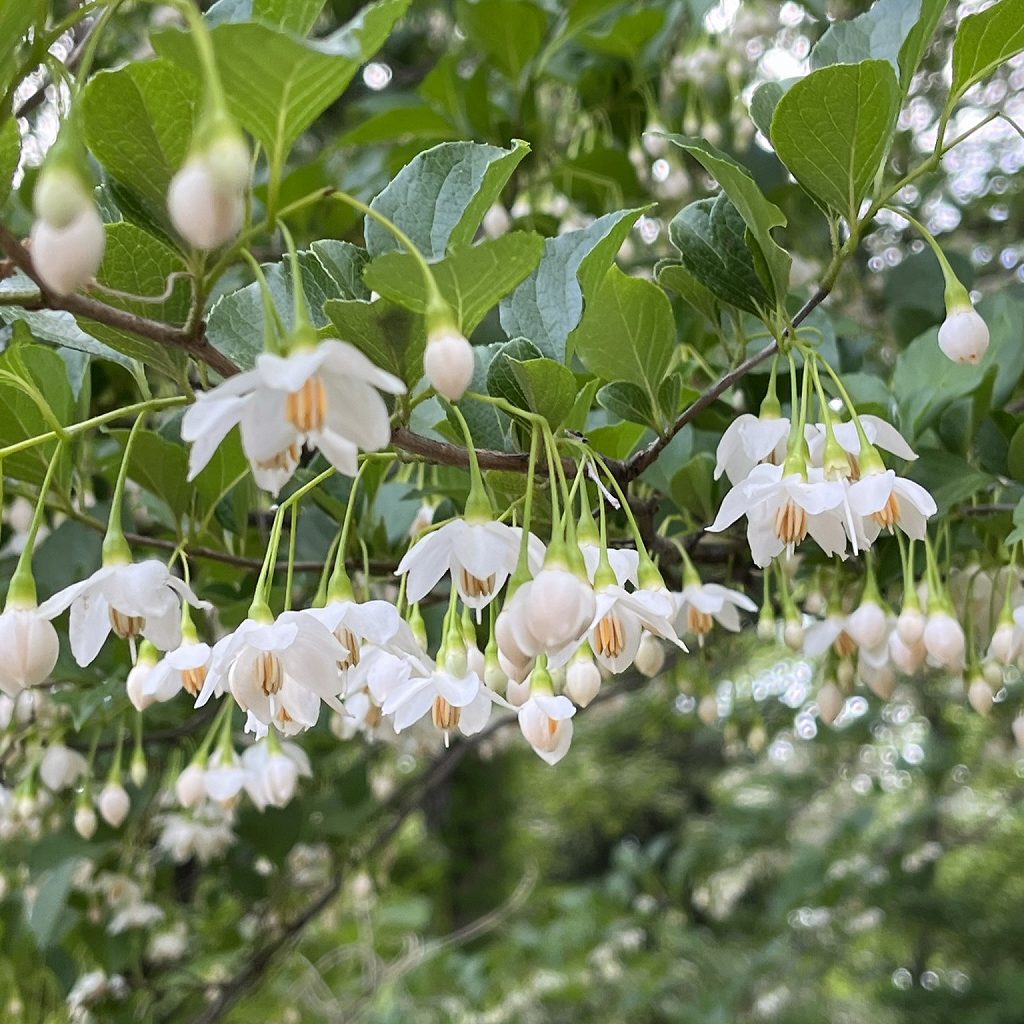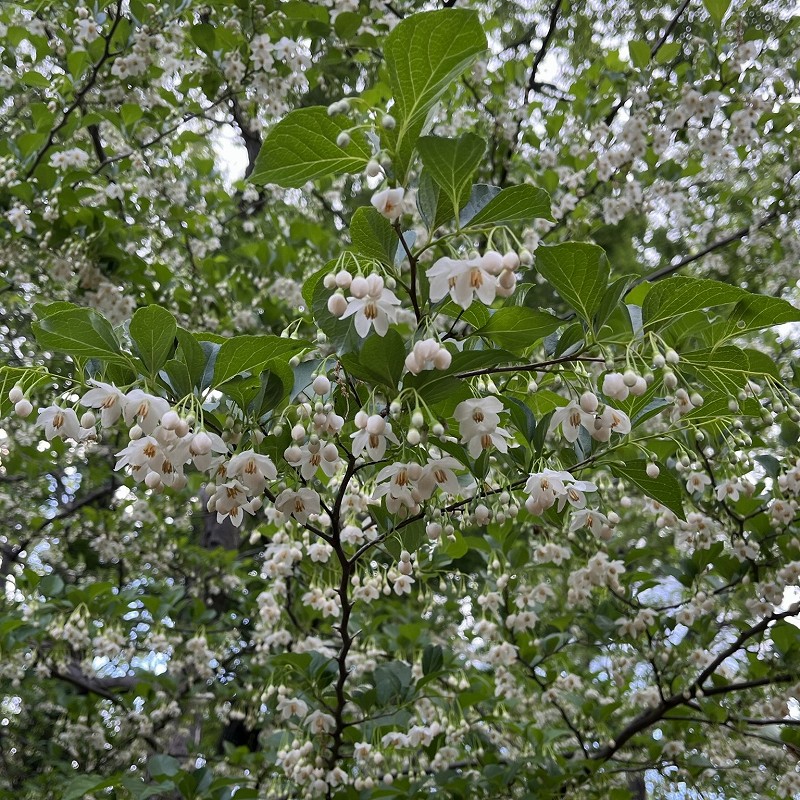エゴノキの花は甘い芳香があります。5つに深く裂けて半開、雄しべが10本。昔は子どもたちが花を摘んで両手で揉み、泡立てて遊びました。
Japanese Snowbell flowers have a sweet fragrance. Its half-opened flower has 5 deeply clefts and 10 stamens. In the old days, children picked flowers, rubbed them with both hands, and played with foaming them.
【仮名】エゴノキ, チシャノキ
【和名】野茉莉, 萵苣の木
【英名】Japanese Snowbell
【学名】Styrax japonica
【誕生】05/ 07
【開花】05, 06月
【花色】White, Pink






エゴノキ
エゴノキの概要
エゴノキはエゴノキ科の落葉高木です。日本では北海道から本州、四国、九州まで、国外では朝鮮半島、中国、フィリピンに分布。湿ったところを好み、山地の雑木林に自生しています。枝や葉に野趣があり、花や実が鈴なり。暑さ寒さに強く育てやすいため、お庭にも植えられます。
エゴノキの名前
エゴノキの和名の由来は果皮に「エグ味」があるからです。エグ味とは舌にまとわりつくゴワゴワとした苦味。英名「雪の鈴」の由来は白色で釣鐘型の花々が鈴なりに咲くからです。ラテン語の属名スティラックスは「安息香」のこと。樹脂に芳香成分の安息香酸が含まれるからです。
エゴノキの別名
エゴノキは別名「萵苣の木」。『万葉集』では「山治左」や「知左能花」と詠まれ、歌舞伎『伽羅先代萩』では「ちさの木」と歌われます。樹を傷つけると萵苣(レタス)のように乳汁が染み出るから。材が緻密で割れにくく、轆轤細工に使われたため、「轆轤木」とも呼ばれました。
エゴノキの姿形
エゴノキの樹皮は褐色で、樹齢を重ねると縦に浅い裂け目が入ります。葉は先端の尖った長楕円形で互生。花は柄が長く、多くの小花が連なって咲き、甘い芳香があります。花冠は5つに深く裂けて半開し、雄しべが10本。花後は卵球形の蒴果を結び、熟すと裂けて種子が露出します。
エゴノキの種類
エゴノキは枝や葉、花に変異のある系統があります。枝は「枝垂野茉莉」、葉は「細葉野茉莉」「大葉野茉莉」「照葉野茉莉」、花は「姫野茉莉」「紅萼野茉莉」など。また、園芸種の「紅花野茉莉」は花が透き通るような桃色で、「ピンクチャイム」という品種名で流通しています。
エゴノキの利用
エゴノキは果皮にエグ味のもととなる有毒成分「エゴサポニン」を含有。誤って食べると喉を刺激するだけでなく、胃の粘膜を傷めて喀血する恐れがあります。一方、石鹸のように衣類の汚れを落とすので、昔は洗濯に使用。子どもたちは花を摘んで両手で揉み、泡立てて遊びました。
Japanese Snowbell
Japanese Snowbell is a deciduous tall tree of Styracaceae family. In Japan, it is distributed from Hokkaido to Honshu, Shikoku, and Kyushu, and overseas, it is distributed in the Korean Peninsula, China, and the Philippines. It likes damp places and grows naturally in thickets of mountains. The branches and leaves are rustic, and the flowers and fruits are bell-shaped. It can be planted in the garden because it is resistant to heat and cold and is easy to grow.
Japanese name of Japanese Snowbell means “harsh taste tree” because the pericarp has a stiff bitterness that clings to the tongue. The English name comes from the white flowers that bloom like bells. The genus name Styrax in Latin means benzoin. This is because the resin contains benzoic acid, which is an aromatic component.
Japanese Snowbell is also known as the “Lettuce Tree”. In Japan’s oldest collection of poems “Manyoshu”, it is described as “mountain lettuce” and “lettuce flower”, and in the mid-Edo period Kabuki “Meiboku Sendaihagi,” it is sung as “lettuce tree”. This is because if the tree is damaged, milk will ooze out like lettuce. It was also called “wheel tree” because it was used for wheel work because the wood is dense and hard to crack.
The bark of Japanese Snowbell is brown, and as the tree ages, shallow vertical fissures appear. The leaves are oblong and alternate with pointed tips. The flowers have long stems, many small flowers bloom in a row, and have a sweet fragrance. The corolla is deeply divided into 5 and half-opened, and there are 10 stamens. After flowering, an oval-shaped capsule is formed, and when ripe, it splits and the seeds are exposed.
Japanese Snowbell has strains with mutations in branch, leaf, and flower. “Pendulus” in branch, “Angustifolius” and “Kotoensis” in leaf, and “Parviflorus” and “Rubricalyx” in flower. In addition, the cultivar “Roseus” has pink flowers and is distributed under the name “Pink Chime”.
Japanese Snowbell contains a toxic ingredient “Egosaponin” that is the source of the harsh taste in the pericarp. If you eat it by mistake, it will not only irritate your throat, but also damage the mucous membrane of your stomach and cause hemoptysis. On the other hand in the past, since it removes stains from clothes like soap, it was used for laundry. The children picked flowers, rubbed them with both hands, and played with foaming them.


